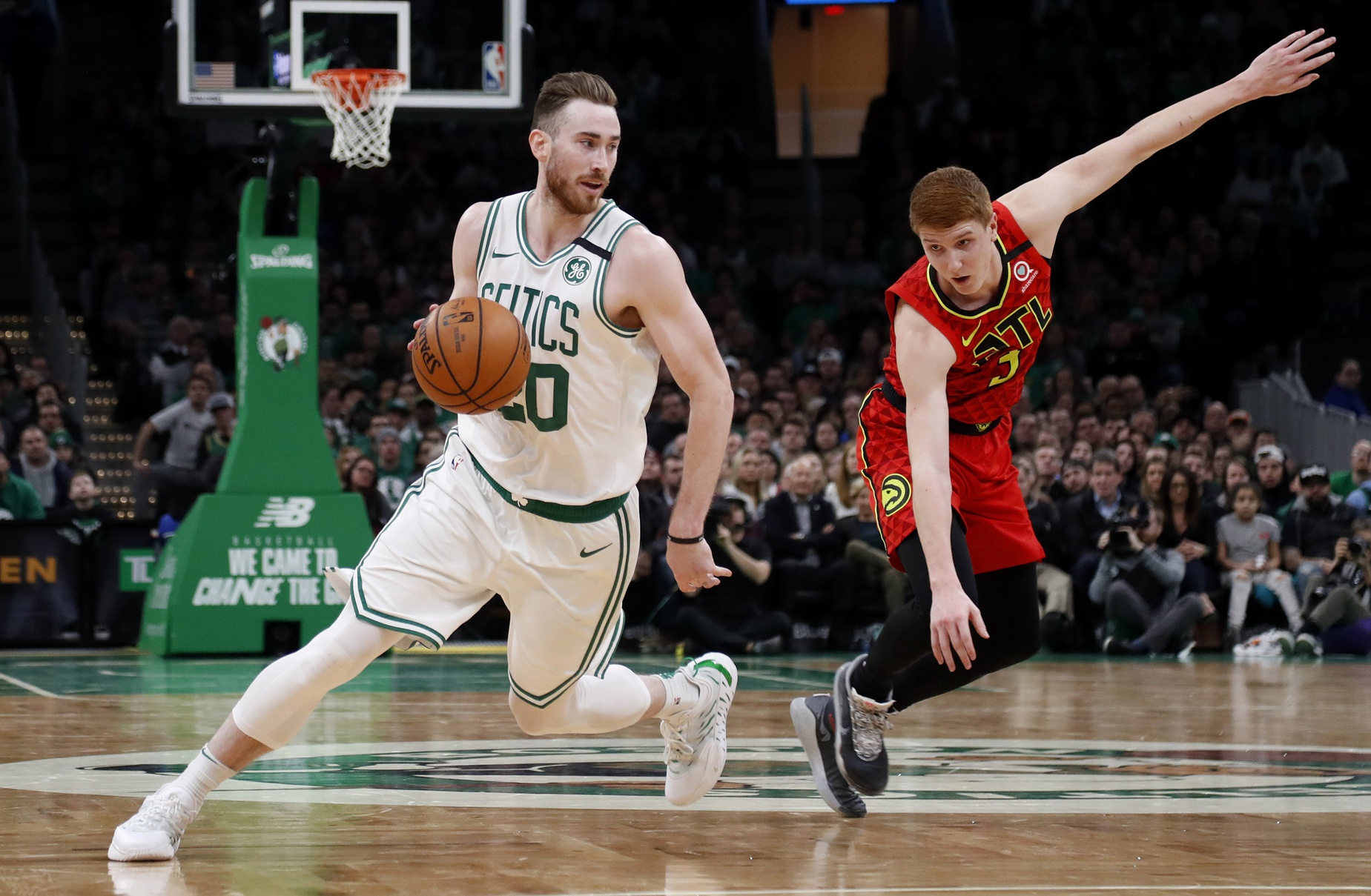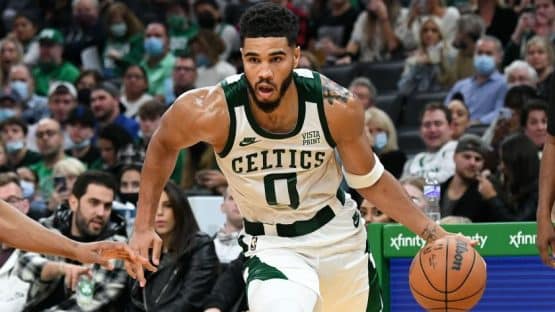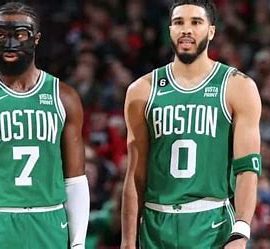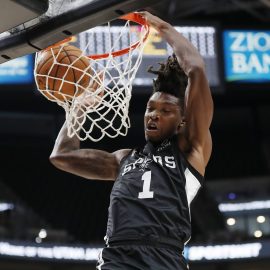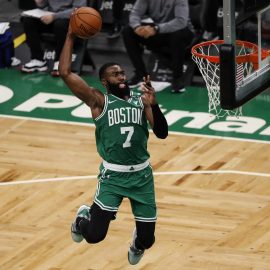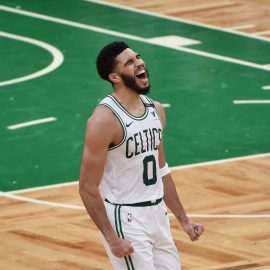Much has been written about what Gordon Hayward’s playmaking has meant to the 2019-2020 Boston Celtics. Fans and pundits alike have likened it as the lynchpin to Boston’s elite offense. But, there is a specific set Brad Stevens should deploy more often for the All-Star forward.
During the first few years of Stevens’ tenure in Boston, his squads perpetually ranked in the top tier for dribble handoff frequency. In fact, they led the league in frequency during Isiah Thomas’ magical 2016-17 season. The DHO allows for handlers to score from all three levels, find rollers or poppers or kick out to men in the corners.
Yet, Steven’s has depended less on the DHO in recent years. The Celtics have seen their DHO frequency fall towards the bottom half of the NBA. Perhaps he is relying on individual talents to manipulate traditional pick and rolls more. Regardless, his former college star is a DHO godsend and deserves to see more looks from these sets.
Before I dive into some footage, let me explain why Hayward is so potent off of DHOs. His 6-foot-8 frame combined with his snake-like ballhandling makes him a candidate to shoot over smaller defenders or drive past bigger ones. Additionally, his exceptional court vision becomes amplified when defenders are expecting a mid-range jumper.
There are many ways Hayward can create a positive play out of the DHO. When Stevens inserts a high IQ screen-and-roller like Grant Williams into the lineup, Hayward almost always makes the right decision. Look at how much space is there is for Jayson Tatum when two players are forced to defend Hayward.
[protected-iframe id=”09768b989b02c6a4d2a4be5a1b678db7-142507471-60534810″ info=”https://3ball.io/embed/0021900112_451″ width=”560″ height=”315″ frameborder=”0″ allowfullscreen=””]This play allows knockdown catch-and-shoot threats like Kemba Walker to nail open triples. There’s a reason Walker is shooting a blazing 46.1 percent on these types of looks this year. Check out the exact same play below.
[protected-iframe id=”1d5f1720c310e6b5be219112c380bf15-142507471-60534810″ info=”https://3ball.io/embed/0021900072_427″ width=”560″ height=”315″ frameborder=”0″ allowfullscreen=””]When defenders switch during the DHO, Hayward often finds himself in a position to blow by a slower big. It’s why in this next clip you will see P.J Washington hesitate for a single moment, debating if he needs to prepare for Hayward to burn Bismack Biyombo. This slight pause is all Tatum and Hayward need to connect on a gorgeous backdoor cut.
[protected-iframe id=”c77992696dc9e472923e7c73ce85a720-142507471-60534810″ info=”https://3ball.io/embed/0021900497_318″ width=”560″ height=”315″ frameborder=”0″ allowfullscreen=””]But the nightmare for opposing defenses begins when teams prepare for a Hayward drive. Although Hayward has not been a terribly efficient pull-up 3-point shooter, his catch-and-shoot stats are impressive at 43.2 percent this year. Daniel Theis flipping this ball for a Hayward triple passes both the eye and stats test.
[protected-iframe id=”1d2c7d341cc72294c806f41e0e65aeb2-142507471-60534810″ info=”https://3ball.io/embed/0021900455_325″ width=”560″ height=”315″ frameborder=”0″ allowfullscreen=””]To prevent this high percentage shot, defenses sometimes opt to fight over the screen. Boston has a multitude of smart, bulky screens that allow Hayward to get the step on his man. Considering he is arguably the most consistent mid-range shooter for the Celtics, this usually results in a good scoring opportunity.
[protected-iframe id=”6632d982849fb8b8f5d3d0a29228c35e-142507471-60534810″ info=”https://3ball.io/embed/0021900098_9″ width=”560″ height=”315″ frameborder=”0″ allowfullscreen=””]Here’s where things get a little more nuanced. Walker softly hands off to Hayward and then Theis feigns another screen for Hayward. Next, Hayward capitalizes on Jeremy Lamb’s misplaced anticipation and darts towards his favorite midrange area. Domantas Sabonis is forced to abandon Jaylen Brown in the corner and Hayward finds him for an easy look.
[protected-iframe id=”f95bc6af7aa41abf733536f01a56b71c-142507471-60534810″ info=”https://3ball.io/embed/0021900357_410″ width=”560″ height=”315″ frameborder=”0″ allowfullscreen=””]The one-on-one scoring ability of Hayward is so strong that help defenders stay near the rim even when primary defenders are in solid coverage. Sensing this, Hayward often takes advantage by slipping little dump-offs to bigs on a delayed roll.
[protected-iframe id=”056f88e0e3074f6e041f038056c38c55-142507471-60534810″ info=”https://3ball.io/embed/0021900455_312″ width=”560″ height=”315″ frameborder=”0″ allowfullscreen=””]In a nutshell, Hayward is highly skilled at beating opponents when they either sag off of him or find themselves a step behind him. The percentages back it up. When paired with his vision, DHO sets for Hayward can prove deadly for the Cs.
Will we see an uptick in these specific sets? Perhaps. Hayward has shown solid chemistry with Robert Williams. A vertical spacer, Williams draws bigs towards him to clear scoring lanes for ballhandlers. Check out Kevin Love opening the paint for Hayward by sticking to Williams. When Timelord returns, expect more plays like this.
[protected-iframe id=”d7d5ca1be02613ee0ab7576feca53cd1-142507471-60534810″ info=”https://3ball.io/embed/0021900098_114″ width=”560″ height=”315″ frameborder=”0″ allowfullscreen=””]In the meantime, enjoy the Celtics’ current winning ways. The offense is clicking and adding this wrinkle would only make it more of a pleasure to watch.
Add The Sports Daily to your Google News Feed!
